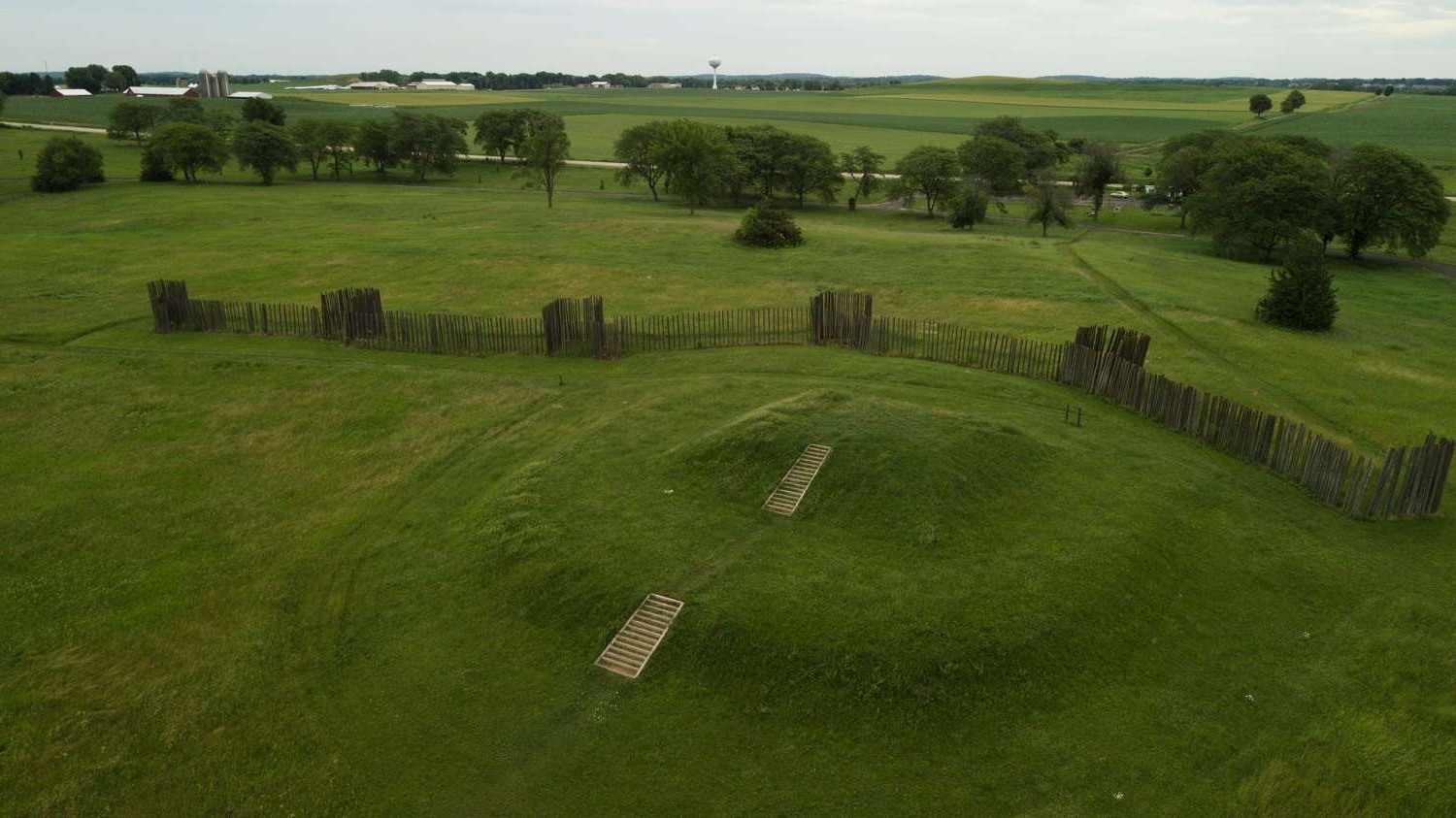Secrets Of Iowa’s Ancient Mound Builders

Have you ever wondered about the ancient history hidden in Iowa's landscapes? The Mound Builders of Iowa left behind incredible earthworks that still puzzle and fascinate historians today. These ancient people created large mounds for various purposes, including burial sites and ceremonial grounds. Some of these mounds are shaped like animals, while others are simple, yet massive, earthen structures. Visiting these sites offers a unique glimpse into a civilization that thrived long before modern times. Whether you're a history buff or just curious, exploring these ancient mounds can be a thrilling adventure. Let's dive into the secrets of Iowa's Mound Builders and uncover their mysterious past.
Uncovering Iowa's Ancient Mound Builders
Iowa's ancient mound builders left behind fascinating earthworks that continue to intrigue historians and archaeologists. These mounds, often shrouded in mystery, offer a glimpse into the lives of the people who built them. Let's explore some of the most captivating sites.
Effigy Mounds National Monument
Effigy Mounds National Monument is a treasure trove of ancient earthworks. Located in northeastern Iowa, this site features mounds shaped like animals, including bears and birds. These effigy mounds are believed to have been built by Native American cultures over a thousand years ago.
Great Bear Mound: This massive mound, shaped like a bear, is one of the most iconic effigy mounds in the park. It stands as a testament to the mound builders' skill and creativity.
Marching Bear Group: A series of bear-shaped mounds that appear to be marching in a line. This group of mounds is a unique and impressive sight.
Fire Point Mound Group: Located on a bluff overlooking the Mississippi River, this group of mounds offers stunning views and a sense of connection to the ancient builders.
Toolesboro Mounds National Historic Landmark
Toolesboro Mounds, situated near the confluence of the Iowa and Mississippi Rivers, is another significant site. These mounds were constructed by the Hopewell culture, known for their elaborate burial practices and trade networks.
Toolesboro Mound Group: This collection of mounds includes several burial mounds that have yielded fascinating artifacts, such as pottery and copper tools.
Visitor Center: The Toolesboro Visitor Center provides valuable information about the Hopewell culture and the significance of the mounds. It's a great starting point for anyone interested in learning more about these ancient builders.
Blood Run National Historic Landmark
Blood Run, located on the border of Iowa and South Dakota, is a sprawling site that was once a major trading center for Native American tribes. The mounds here are part of a larger complex that includes village sites and other earthworks.
Blood Run Mounds: These mounds are scattered across the landscape and offer a glimpse into the lives of the people who once inhabited this area.
Village Sites: In addition to the mounds, Blood Run features remnants of ancient villages, providing a more comprehensive understanding of the site's historical significance.
Hartley Fort State Preserve
Hartley Fort State Preserve, located in Allamakee County, is home to a series of mounds that were likely built by the Woodland culture. This site offers a more secluded and peaceful experience compared to some of the larger mound sites.
Hartley Fort Mounds: These mounds are nestled within a forested area, creating a serene atmosphere for visitors. The mounds here are less well-known but no less fascinating.
Interpretive Trails: The preserve features trails with interpretive signs that provide information about the mounds and the people who built them. It's a great way to explore the site at your own pace.
Malchow Mounds State Preserve
Malchow Mounds, located in Lee County, is a lesser-known but equally intriguing site. These mounds were built by the Late Woodland culture and offer a quieter, more intimate experience.
Malchow Mound Group: This group of mounds includes several burial mounds that have been well-preserved. The site is relatively small, making it easy to explore in a short amount of time.
Scenic Overlook: A nearby overlook provides a beautiful view of the surrounding landscape, giving visitors a sense of the natural beauty that the mound builders would have experienced.
Exploring Iowa's Ancient Heritage
Iowa's ancient mound builders have left behind a rich legacy that continues to captivate and inspire. These sites offer a unique opportunity to connect with the past and gain a deeper understanding of the people who once called this land home. Whether you're a history buff or simply curious, these mounds are worth a visit.
Discovering Iowa's Hidden History
Iowa's ancient mound builders left behind a fascinating legacy. These mounds, scattered across the state, offer a glimpse into the lives of the people who built them. Visiting these sites, like Effigy Mounds National Monument, provides a unique opportunity to connect with history. The mounds are not just piles of earth; they are sacred spaces that tell stories of a time long past. Exploring these sites helps us appreciate the rich cultural heritage of Iowa. Whether you're a history buff or just curious, these ancient mounds are worth a visit. They remind us of the ingenuity and spirit of the people who once called this land home. So next time you're in Iowa, take a moment to explore these hidden treasures. You'll walk away with a deeper understanding of the state's ancient history.

